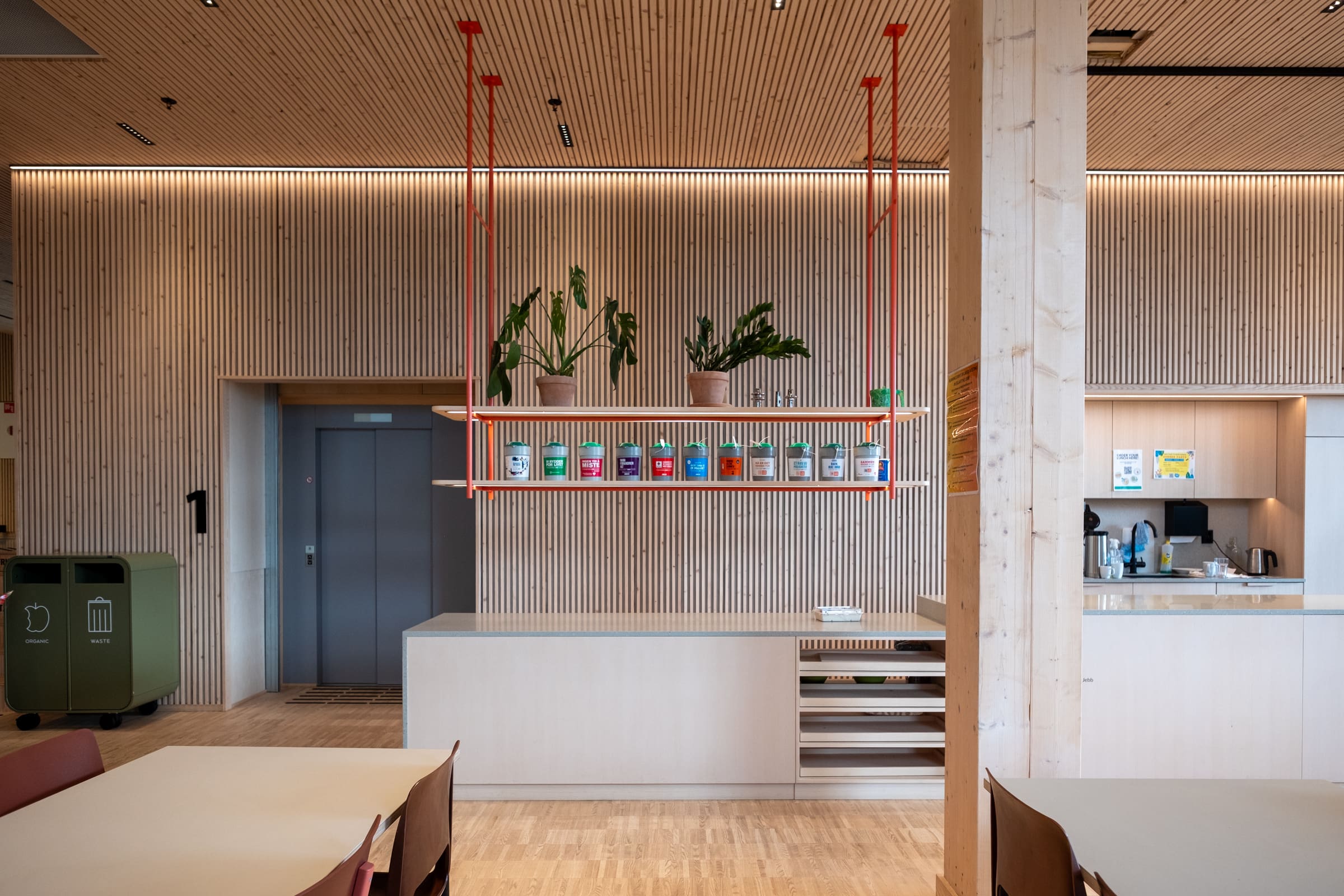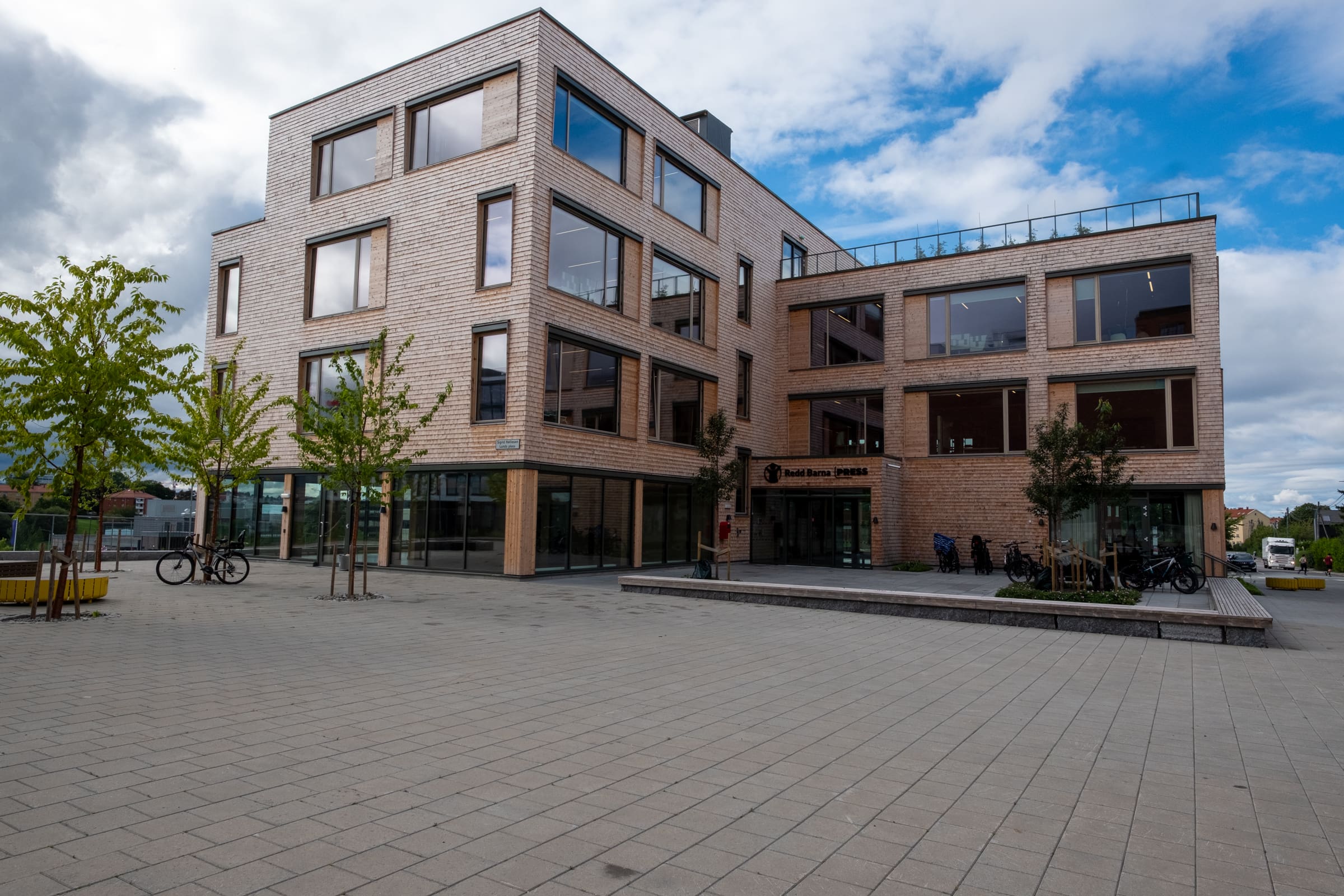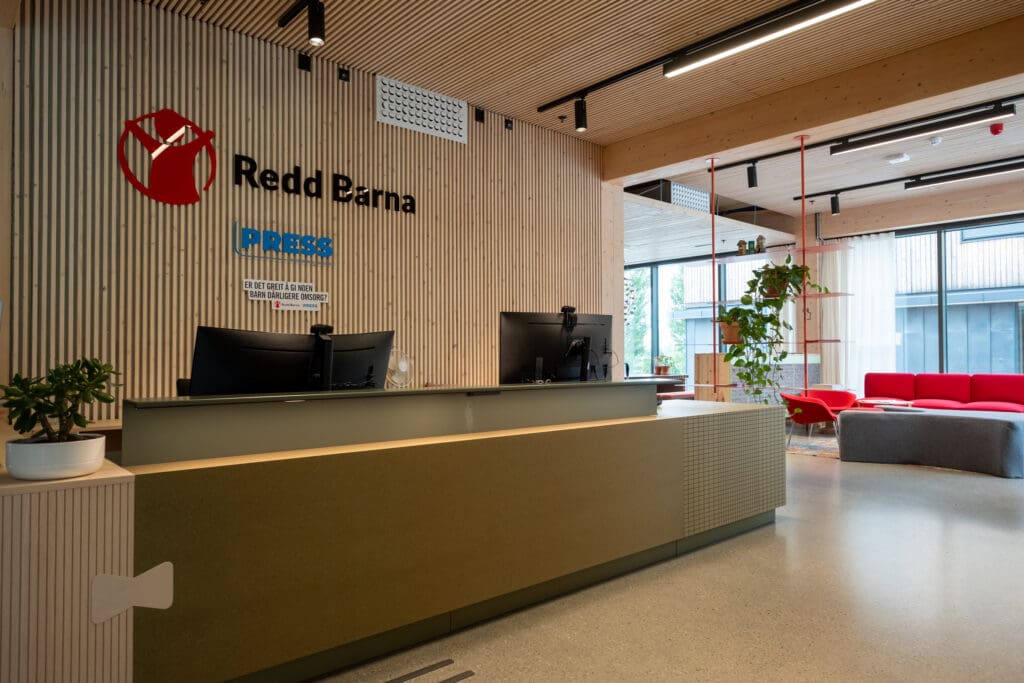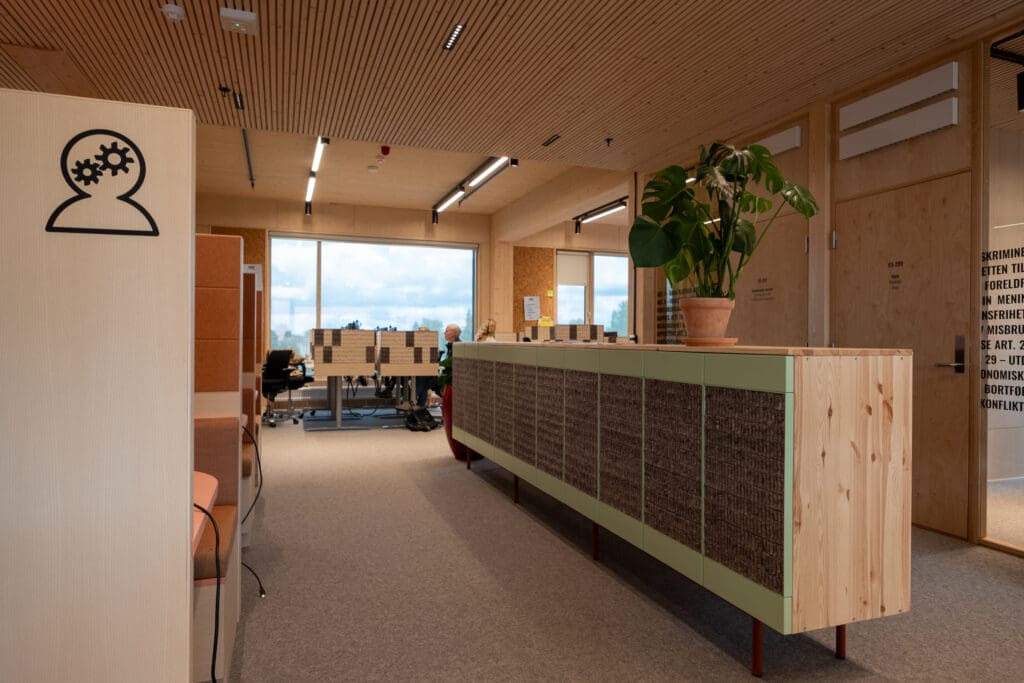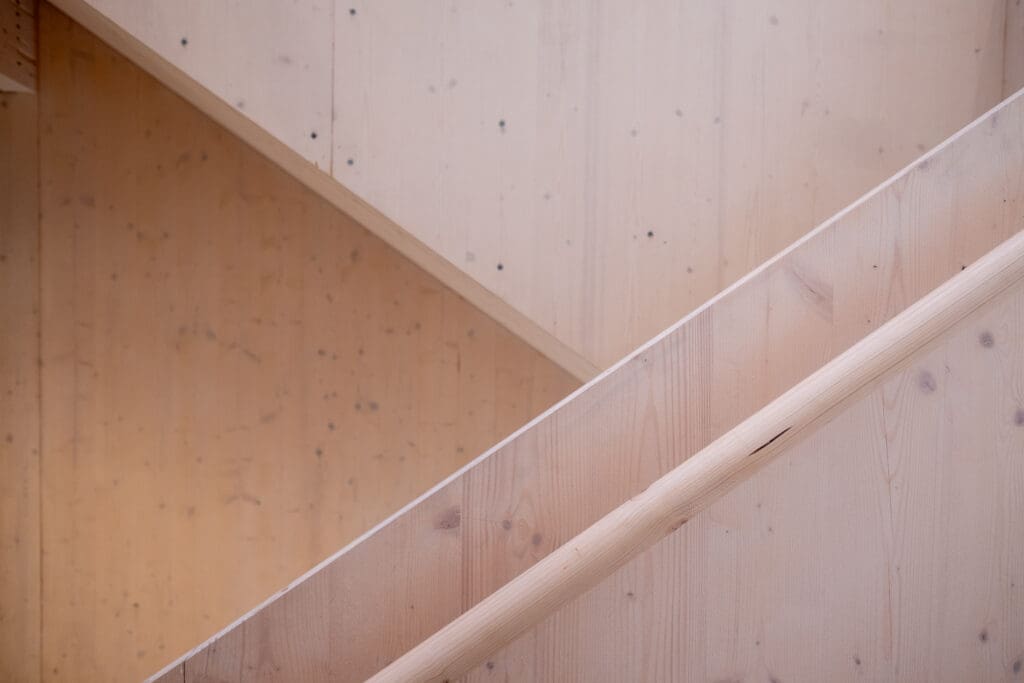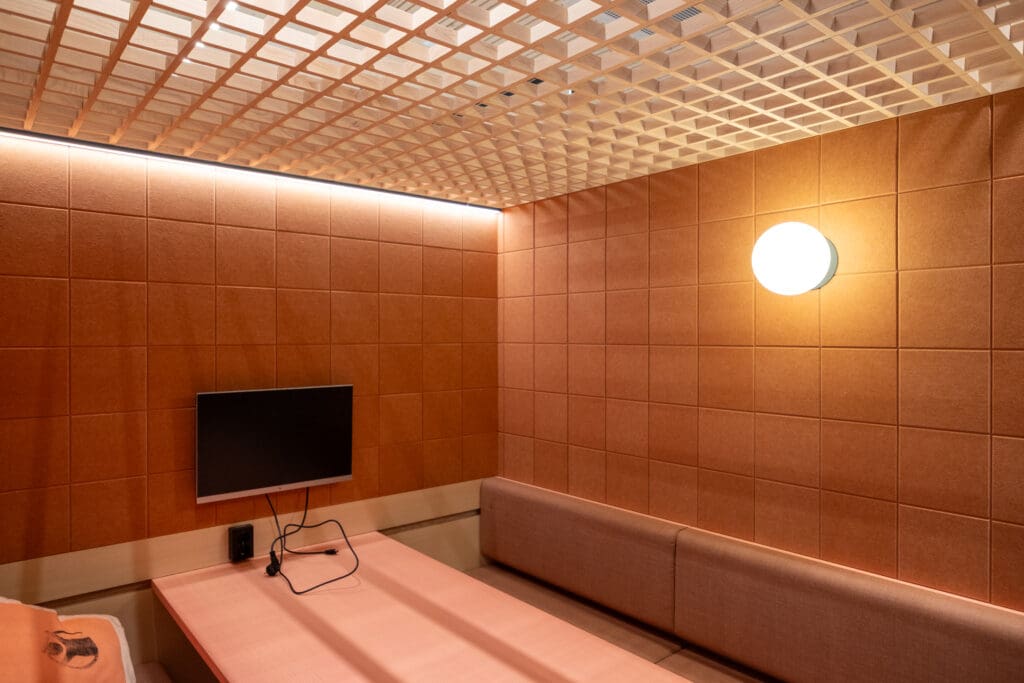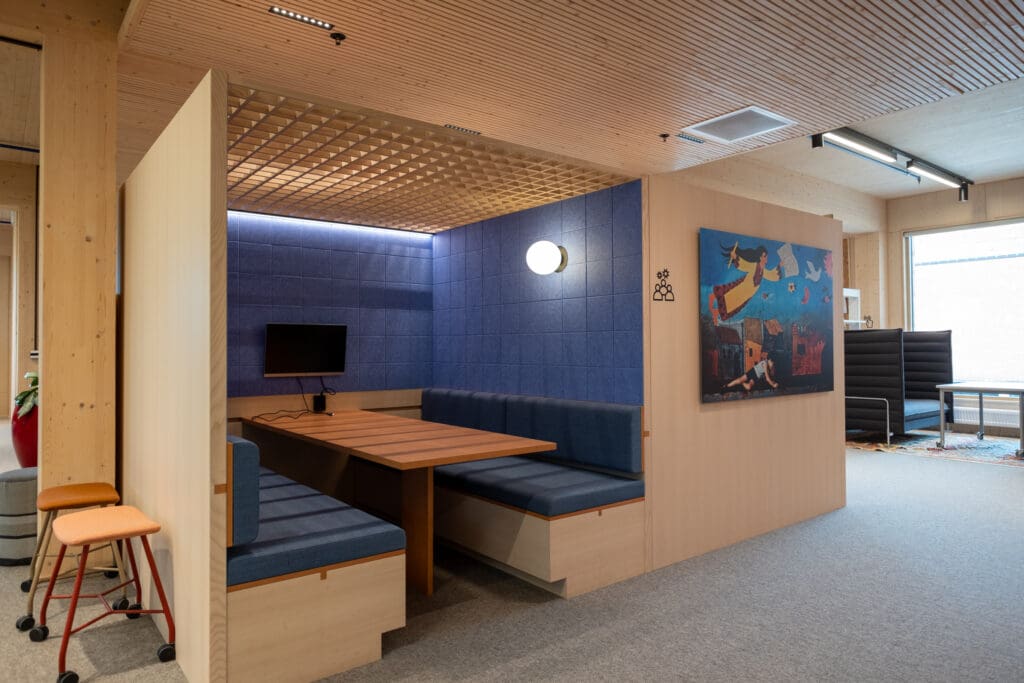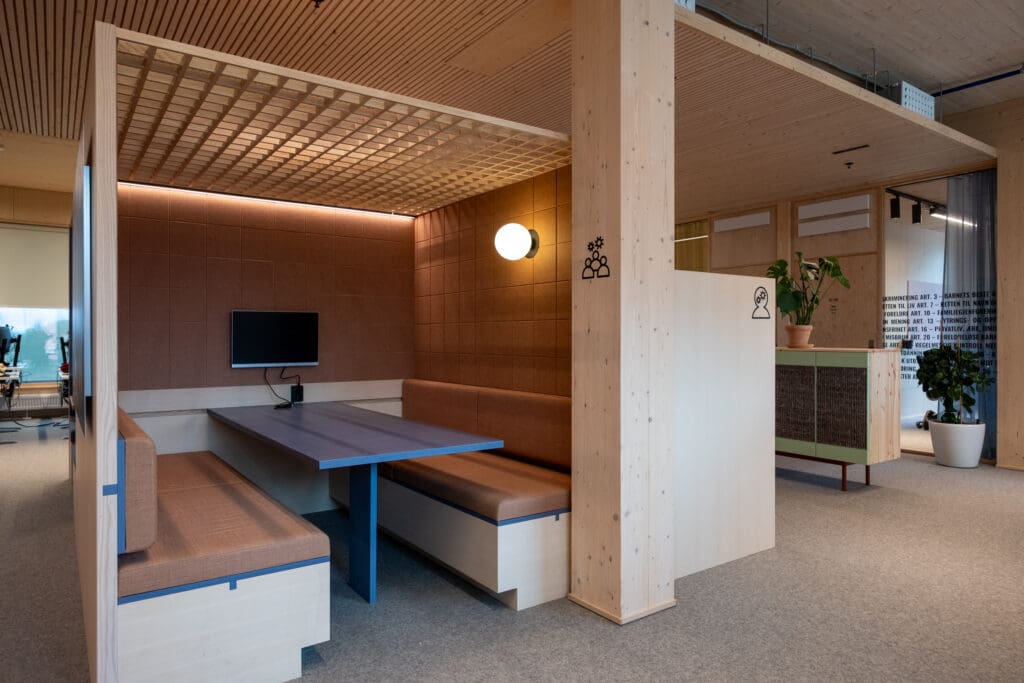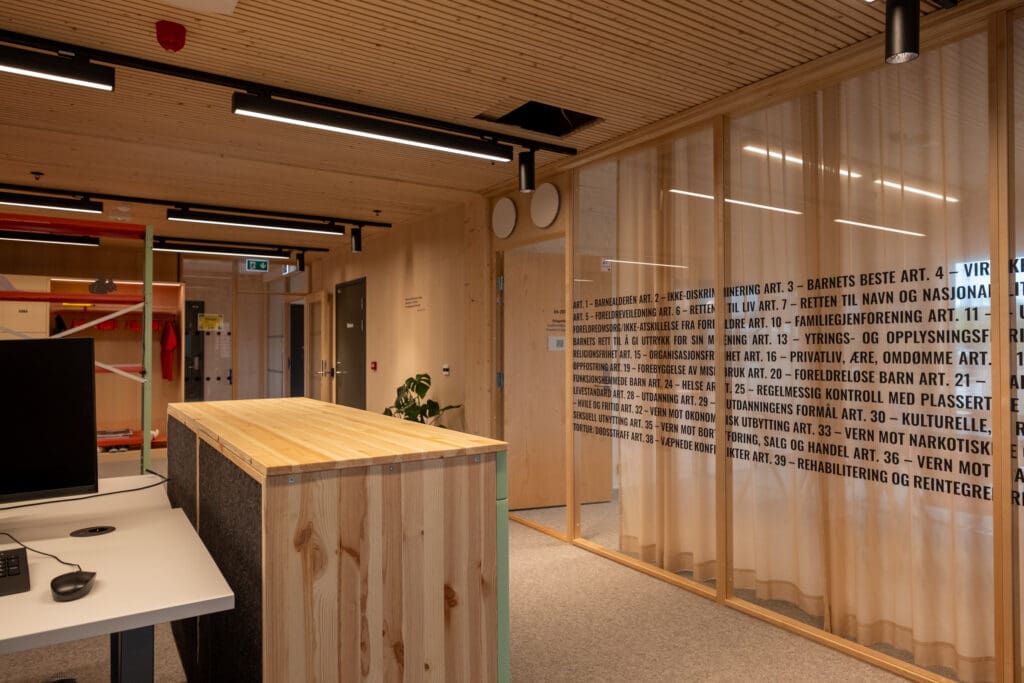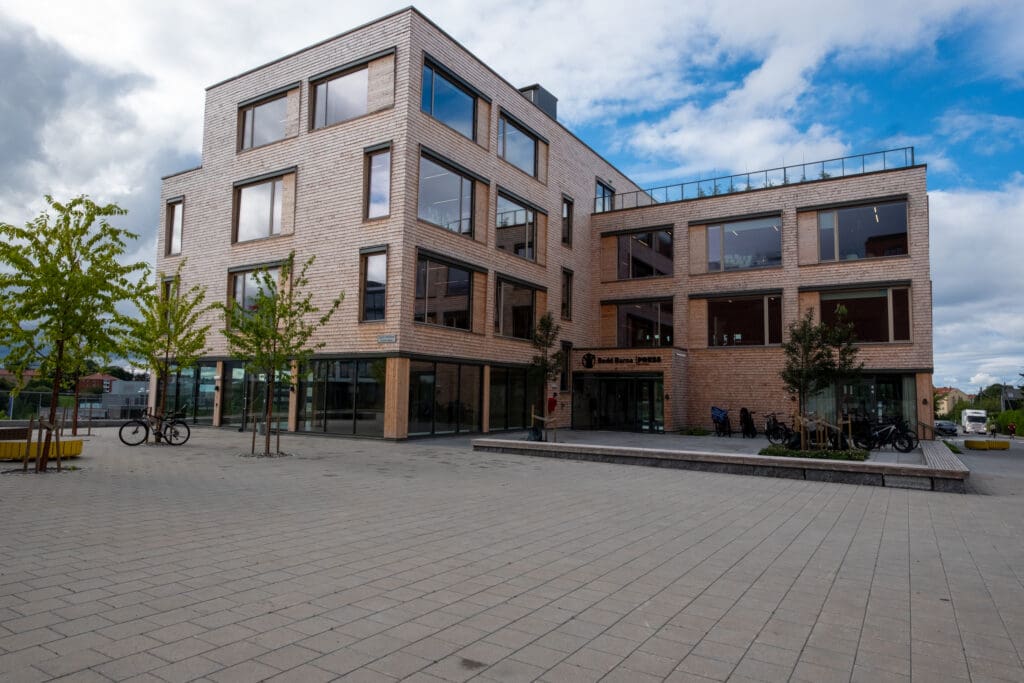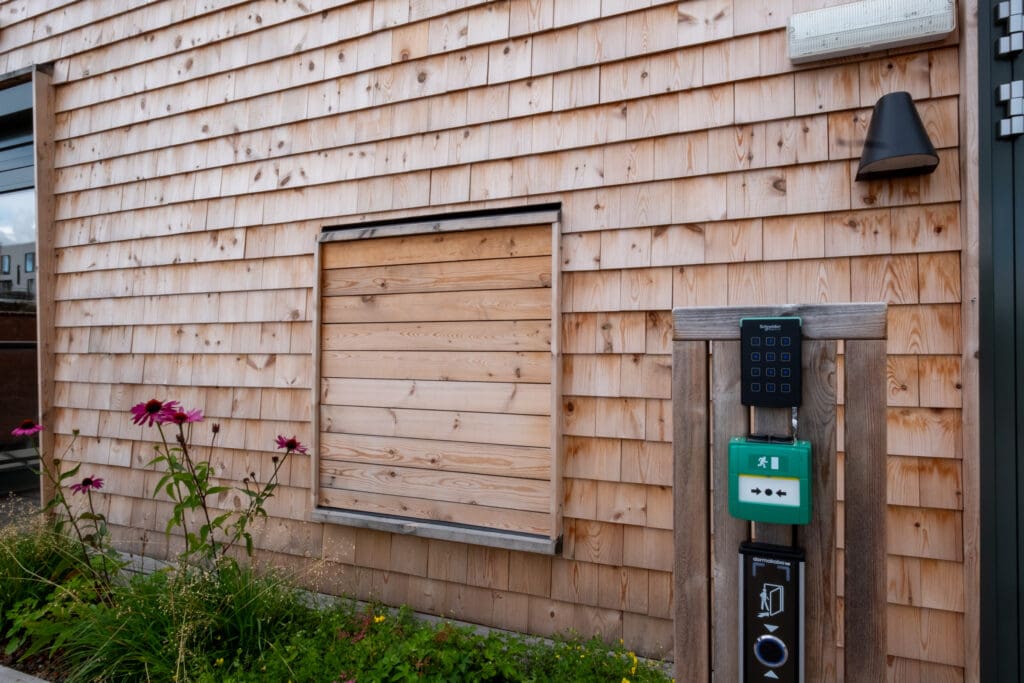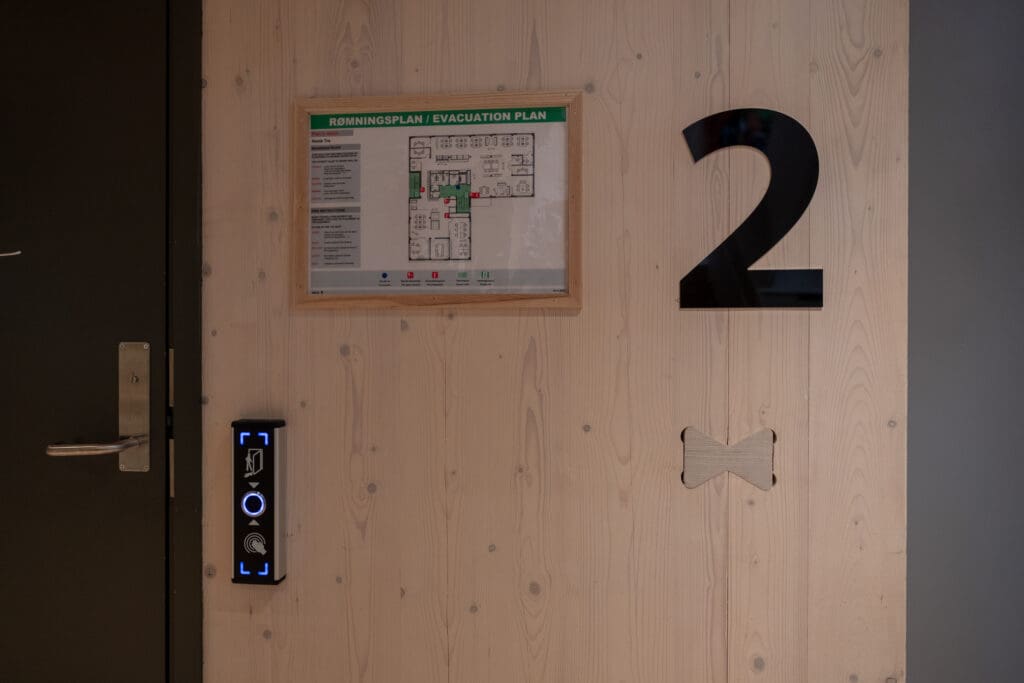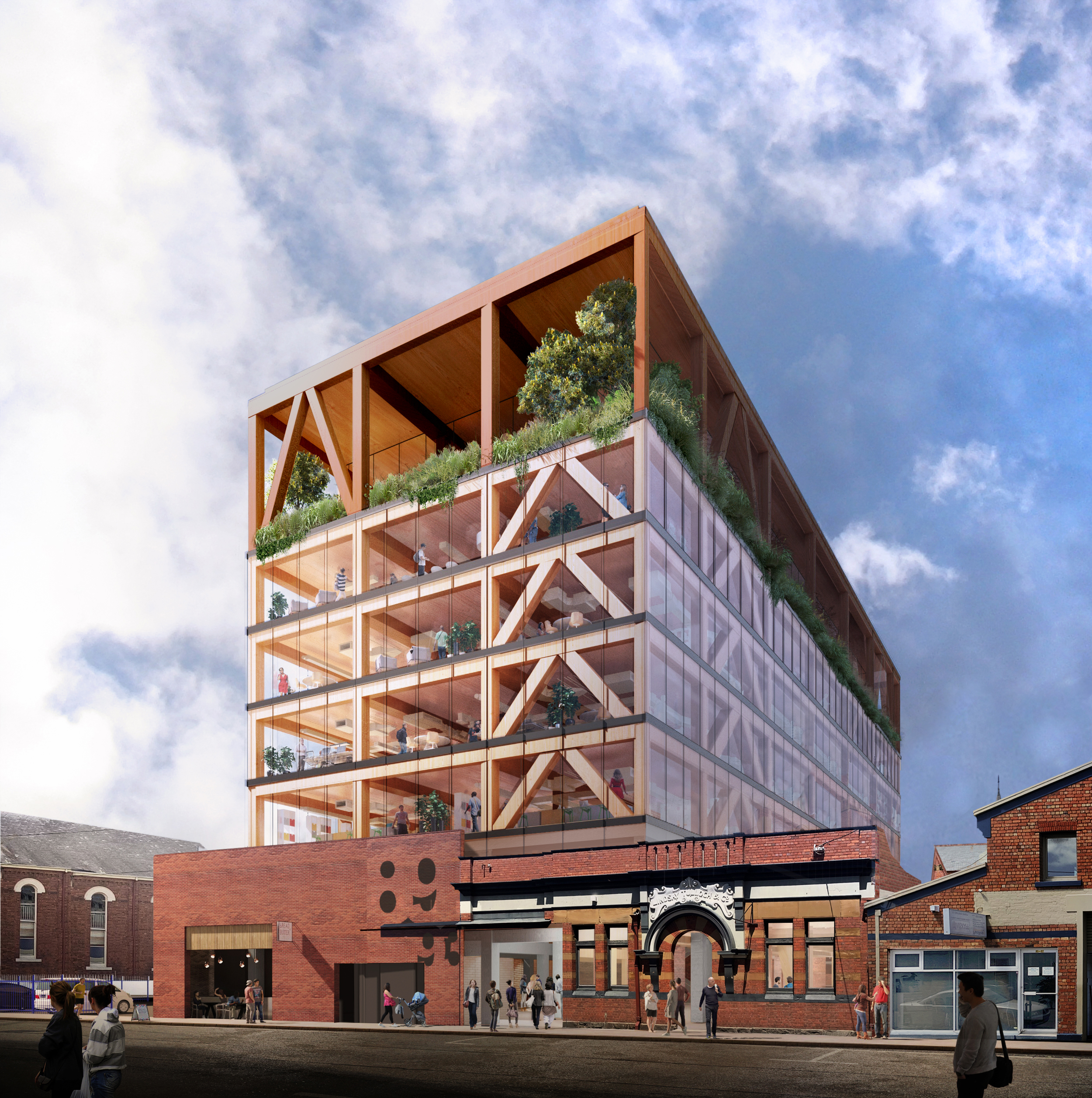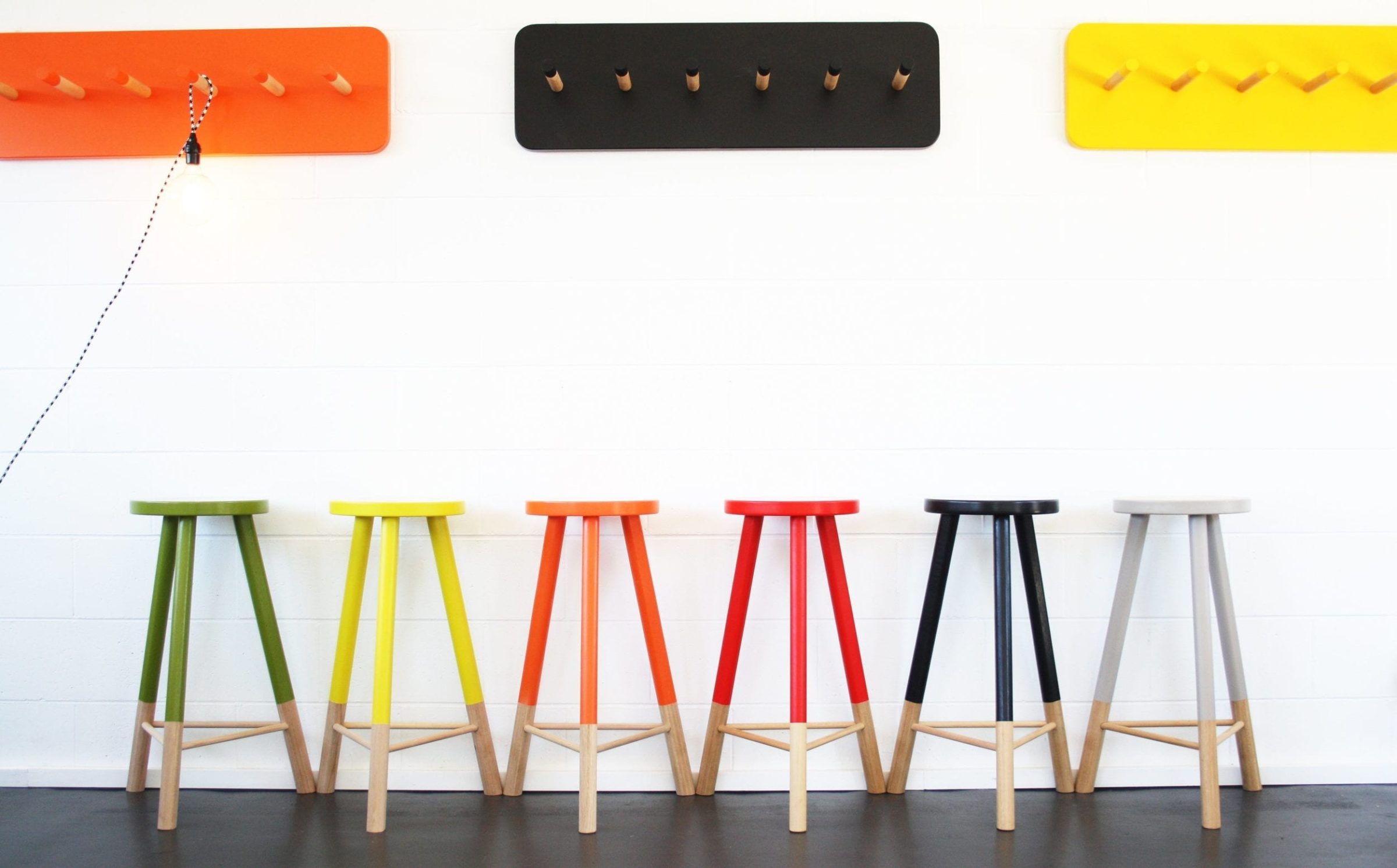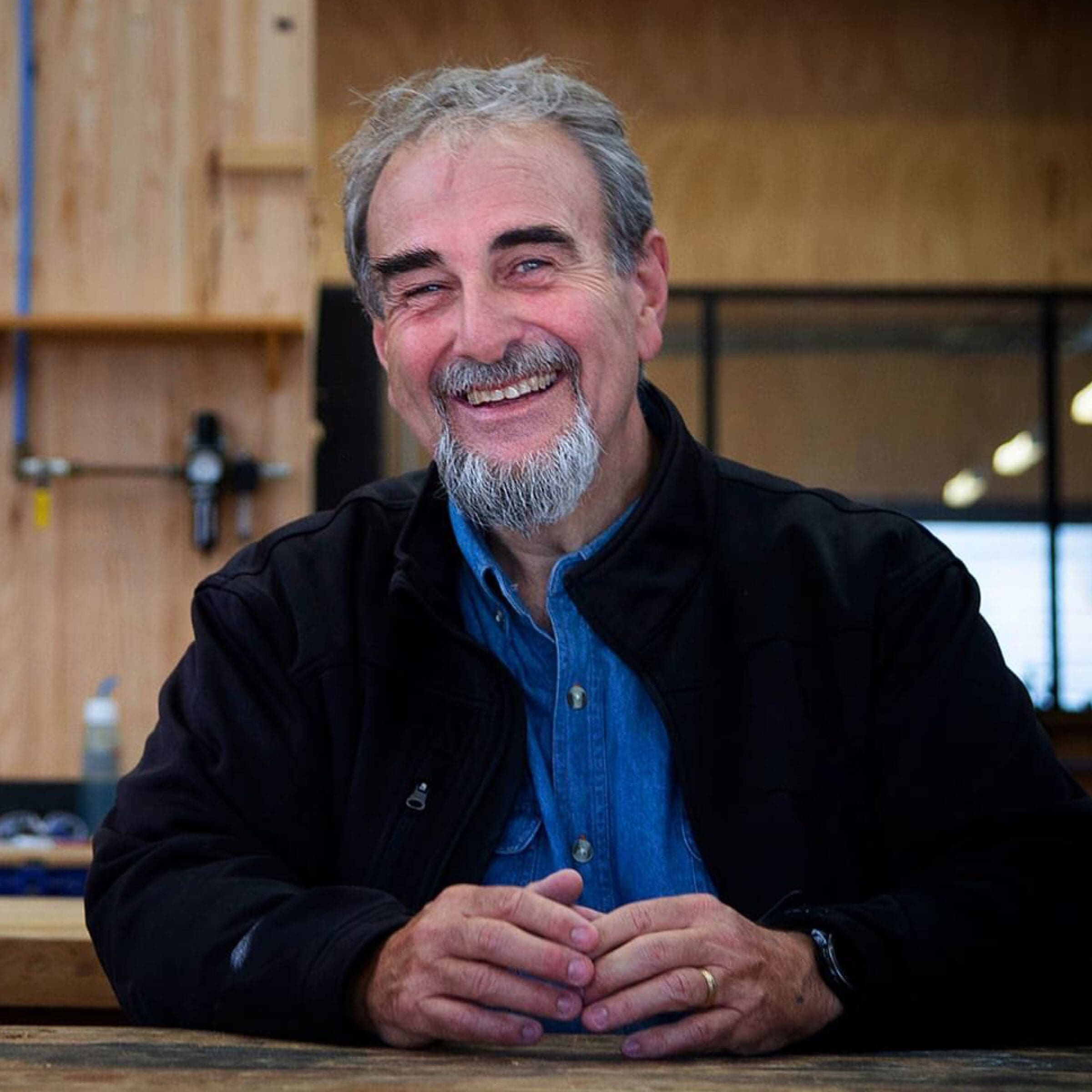Nurturing Futures: Save the Children Norway’s Timber Haven
Norway’s Save the Children office, a recent creation by the Oslo-based timber design consultancy Oslotre, stands as an exceptional illustration of the ultimate sustainable timber building. Formerly recognised as HasleTre, this mass timber-based structure is a flagship of sustainable building design. At the forefront of this project is Oslotre, a studio specialising in timber design and construction technology. Original Tasmanian Timber shares the Save the Children project as a model case study of what is possible: improved wellness, a circular economy, and a better climate future for our children.
Building for a Circular Future
The Save the Children House stands out for its ability to be used for as long as possible due to a flexible design before being disassembled and reused at the end of its life . Unlike conventional buildings, it focuses on sustainability from both a material and functional perspective, setting a benchmark for future construction projects.
Using timber and other natural materials contributes to a circular economy by prioritising recyclability and reusability. It also makes for a better space to reside within.
Wellness and timber: transforming the work environment
When Save the Children Norway sought a new space, they weren’t merely searching for a building; they were seeking a vessel for their mission, and the journey led them to the timber haven created by Oslotre. The alignment of purpose and space was immediate and profound.
The transition from a traditional, clinical workspace to Save the Children House marked a significant shift in the work environment. The timber construction brought a sense of warmth and homeliness, transforming the daily experience for the organisation’s staff. Huse-Amundsen noted that the timber’s natural warmth contributed to a more comfortable atmosphere, reducing the need for heating (and ongoing energy use) compared to their previous office.
The standard temperature inside an office building here in Norway is 21 degrees Celsius. We had that at the old office, but we also had to turn it up all the time because people were freezing. Here, we have turned it down to 20 degrees and we have no complaints about it being too cold. It’s warmer here, both physically and the psychological feeling about it, says Huse-Amundsen.
When we visited Save the Children, they had only been in their new office for six months, and the performance of the building was so good that the occupants were actively engaged in research in collaboration with Oslotre and Oslo City, exploring the potential correlation between working in a timber environment and reduced sick leave.
Huse-Amundsen acknowledges the remarkable feedback from staff who express a genuine desire to work in this new environment. The shift is more than physical; it’s a psychological and emotional transformation, creating a workspace that people genuinely enjoy.
What my colleagues tell me is that, in our previous workspace, they felt tired after one day of coming to the office and they tended to have every second day at home so that they didn’t have two days in a row at the office. But here it’s different. They really want to come back because they feel that it’s so nice to be here, says Huse-Amundsen.
The Interconnectedness of climate change and child rights
Save the Children Director, Linn Huse-Amundsen shares that this timber sanctuary not only symbolises a commitment to environmentally conscious construction but also serves as the link between environmental sustainability and the organisation’s values.
A lot of the climate change we see now is violence against the convention of the rights of the child. Every child has a right to play, to be safe, to be with their family, to learn, etc., and climate change [impacts could] make children have to flee because they’re not safe, and so, for example, they won’t get their education and they may get separated from their families.
“Climate change is a very important part of the work we do. Now in Norway, we have our current strategy, supporting children in the fight for a better climate and to help children and families prepare for climate change and tackle it better,” says Huse-Amundsen.
This strategic commitment underscores the profound understanding that environmental issues are not isolated but intricately connected to the rights and well-being of children.
The Save the Children House is a beacon of sustainable design, showcasing the possibilities of mass timber construction in creating environmentally conscious and adaptable buildings. Its commitment to a circular economy, reusability, and occupant well-being sets a new standard for the future of commercial construction.
As we continue to prioritise sustainability, this innovative building serves as an inspiration for Australian architects, developers, and businesses looking to make a positive impact on the environment while ensuring long-term value for their investments.


